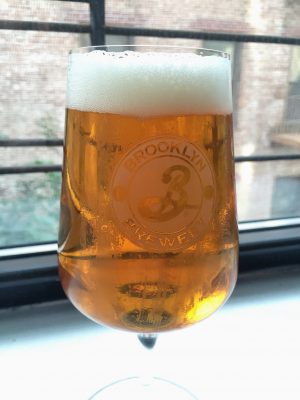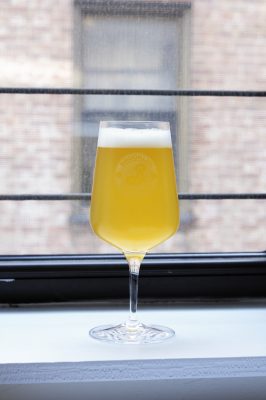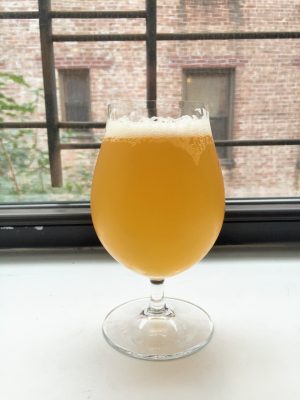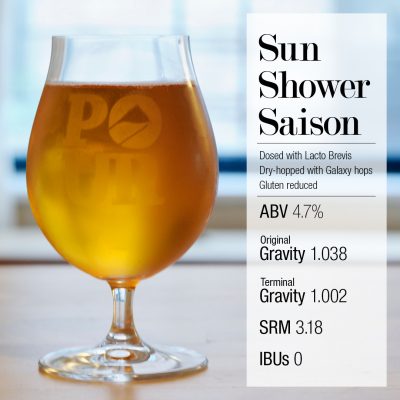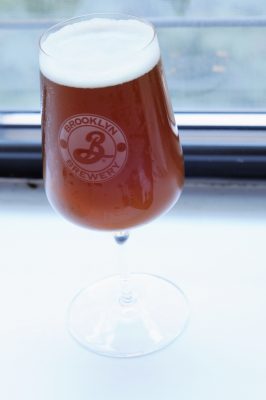Way back in 2015 at the National Homebrewers Conference held in San Diego, Jason Perrault of the Hop Breeding Company (HBC), Karl Vanevehoven of Yakima Chief Hopunion (YCH), and Vinnie Cilurzo of Russian River Brewing Company gave a great talk about a new hop variety called HBC-438. The hop is lovingly referred to as Chuck’s Mexican, having originated from Chuck Zimmerman, a breeder at the USDA, and sharing a genetic lineage to neomexicanus, a wild hop found in the southwestern United States. The history of how this hop has made its way into homebrewer’s kettles is fascinating and can be read here. Origin story aside, what intrigued me the most about the hop was its relatively high alpha acid (14-18%) and high oil contents (2.5-3.5 ml/100g). Additionally, I love the idea of using a hop with at least some of its lineage tied to the Americas.
At the conference, I was given a couple ounces of the hop which lived in the back of my freezer until nearly a year later when I got around to brewing with them. I was a little concerned about the freshness of the hops, but decided to go ahead and give them a shot in a single hop beer. Opening the vacuum sealed bags, there was no detectable cheesiness or other off-aromas so I was optimistic that the brew would turn out well.
Chuck’s Mexican Blond Ale Recipe
Specifications:
Size: 3.25 gal
Efficiency: 66%
Attenuation: 76%
Original Gravity: 1.050
Terminal Gravity: 1.012
Color: 7.82 SRM
Alcohol: 4.98% ABV
Bitterness: 0 IBUs (does not account for whirlpool addition hop isomerization)
Malt Bill:
6 lbs (83.1%) Weyermann Pilsner Malt
6.5 oz (5.6%) Briess Victory Malt
6.5 oz. (5.6%) Weyermann Rye Malt
6.5 oz. (5.6%) Rahr White Wheat Malt
Mash Profile:
152°F – 60m
170°F – 5m
Water Treatment:
Extremely Soft NYC Water
4g Gypsum (to mash)
2g Calcium Chloride (to mash)
Kettle Additions:
0.5ea Whirlfloc Tablets (Irish moss) – 15m
0.5tsp Wyeast Nutrient – 10m
Whirlpool Hopping:
2 oz. HBC-438 (16.6% AA) – 20m
Yeast:
Wyeast 2565 Kölsch
Tasting Notes:
Judged as 2015 BJCP Category 18B American Pale Ale
Aroma (5/12):
The beer has a medium to medium-high fruity character that seems to be equal parts hop and expressive yeast. There is a moderate berry character—maybe blackberry as well as some overripe, almost rotten mango notes. The yeast is slightly sulfury / eggy, which may dissipate with some extended cold storage. There is a weird, almost savory / herbal note that seems to be hop-derived. In the background are some nice toasty / biscuity malt aromas.
Appearance (3/3):
Deep gold with good clarity. Just a touch of light haze. The beer is capped with a big fluffy white head that shows excellent persistence.
Flavor (9/20):
Medium to low malt sweetness upfront with some great toasty malt flavors. The beer is a touch oversweet and could benefit from some more hop bitterness. There is a touch of mineral / seltzer water character on the finish. Again, there is a bit of a weird herbal / savory hop flavor that my palate doesn’t enjoy.
Mouthfeel (5/5):
Medium body with a great roundness / silkiness provided by the rye. Medium to medium-low carbonation. Very pleasant.
Overall Impression (4/10):
I’m pretty surprised at how hoppy this beer is considering the low hopping rate and age of the hops. I can say unequivocally that HBC-438 has a very unique profile. Unfortunately, for me, it contributes an unwelcome melange of overripe berries and savory herbs, which don’t quite jive with my tastes.
Good (26/50)

